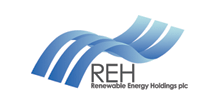CETO Development
The development of CETO is carried out by SeaPower Pacific PTY Ltd, an REH company based in Perth, Western Australia where REH has dedicated computational fluid dynamic modeling specialists and intellectual property management teams. REH is pleased to be working on this project with Carnegie Corporation. REH have licensed Carnegie to use the technology in the Southern Hemisphere.
We have built strong competencies in idea generation and assessment, intellectual property management, engineering design, prototype manufacturing and testing and computational fluid dynamics modeling. The latter allows ideas and designs to be tested rapidly in a virtual environment, prior to physical prototypes being built. These design competencies allow for rapid speed to market and return on investment, and reduce risks associated with full scale, in-ocean performance.
Initial development involved the building of scale models and wave tank testing. Whilst scale models and wave tank testing are useful in developing preliminary designs and eliminating non-performing design elements for wave power technologies, they are ultimately an inadequate way of developing a commercial technology. This is primarily due to the inability to extrapolate performance in a wave tank to full-scale designs in an ocean environment. The ocean is a highly complex environment and the only way to test prospective designs effectively prior to deployment is through the use of highly sophisticated computer models.
All CETO design elements are tested in a virtual ocean that is 250 metres long and of infinite width. Computational fluid dynamic modeling allows the simulation of the movement of the CETO device as well as calculation of any forces and pumping actions that are generated as a result. Motion of the buoyant actuator, wave creation and pump simulation are all controlled and measured by user defined functions developed by SeaPower Pacific, an REH company.
CETO I – CETO II – CETO III - Development Timeline
Inventor and REH board member Alan Burns first conceived of the CETO concept in 1975 but didn’t begin design works until 1999.
Detailed design of the CETO technology platform commenced in 2003 as the global market place for renewable energy began to change and fossil fuels prices began their steep change making many forms of technology economically viable in addition to environmentally attractive. Construction of the first prototype unit started at the end of 2003.
REH acquired the CETO technology in 2005 and further development of the CETO I prototype proved the concept of generating zero-emission power and freshwater from the ocean waves in 2006.
Following proof of concept, work began to focus on how the design of the CETO units will behave in the dynamic ocean environment, and how to extract the most energy from the natural resource. This development effort centres around computational fluid dynamic modeling.
The CETO II commercial design resulted and CETO II has been undergoing “in water” testing off Fremantle for a year now. The units are instrumented and data analysis is providing the necessary parameters for CETO III to be produced in 2009.
2009 / 10 is planned for REH’s first demonstration projects and we believe we are on track for commercial deployment in 2010/2011.
Independent Experts' Report
In December 2006, an independent report on the technical and commercial viability of REH’s CETO wave energy technology was prepared by PB Power, part of Parsons Brinckerhoff, an independent consultancy firm specialising in the global power industry.
Key factors confirmed by the report and the estimated capital expenditure per MW, which positions CETO close to wind turbines, but with more than twice the operating load factor, and the estimated operating expenditure per kWh which enables CETO to be economically competitive with fossil fuel-based generation.
Click here to download the executive summary.
Worth exploring
- Non Gamstop Casinos
- Slot Sites UK
- Top Casino Online 2025
- Non Gamstop Casinos
- UK Casinos Not On Gamstop
- Non Gamstop Casino
- Gambling Sites Not On Gamstop
- Slots Not On Gamstop
- UK Casino Not On Gamstop
- Non Gamstop Casinos
- Non Gamstop Casino UK
- Casino Sites Not On Gamstop
- UK Casinos Not On Gamstop
- Casino Sites Not On Gamstop
- Best UK Casinos Not On Gamstop
- Best Non Gamstop Casinos
- Non Gamstop Casino Sites UK
- Meilleur Casino En Ligne France
- Casino Not On Gamstop
- Casino Not On Gamstop
- Casinos Not On Gamstop
- Casino Online Non Aams
- UK Casino Sites Not On Gamstop
- UK Casinos Not On Gamstop
- Migliori Casino Non Aams








